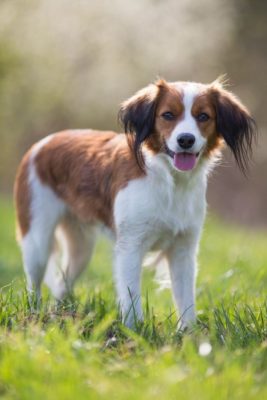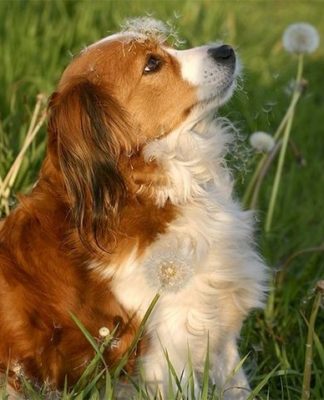Kooikerhondje
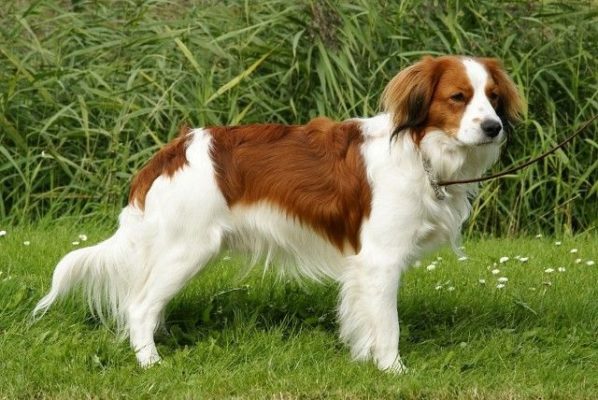
The Kooikerhondje is an affectionate pet that finds common ground with children and even strangers. The Dutch Spaniel is a mood dog; it changes depending on the four-legged dog’s well-being and the environment. The pet requires a lot of attention from the owner and other family members.
Table of Contents
Breed Information
| Another Name | Kooiker, Dutch Spaniel, Dutch Decoy Spaniel |
| Origin | Netherlands |
| Height | Males 35-38 cm Females 36-40 cm |
| Weight | 8-11 kg |
| Fur | Long |
| Color | White-red with black edging on the ears |
| Lifespan | 12-14 years |
| FCI Classification | Retrievers – Flushing Dogs – Water Dogs |
| Group | Hunting dogs, dogs for kids, dogs for apartments |
| Price | $400-800 |
Breed Photos
Origin History
Kooikerhondje first appeared in Holland in the 16th century. What breeds were the ancestors of these dogs not known for sure. Some believe the Scottish Retriever to be the ancestor of the Dutch Spaniel. Representatives of this breed were to be used for hunting birds, particularly ducks.
The Kooiker was on the verge of extinction during and after World War II. Baroness van Ammerstol saved the breed; she could export several representatives and increase the number of individuals. Kooikerhondje means “duck hunter’s dog” in Dutch.
Appearance
Representatives of this breed are small in size. Males reach a height of only 40 cm and females 38 cm. Kooikerhondje is a dog with an almost square body structure. The head is medium-sized with drooping large ears. The Dutch Spaniel’s muzzle is elongated, the nose is black, and the neck is muscular. Notably, the hind legs of the Kooikerhondje are longer than the front legs.
Kooikerhondje is a long-haired dog whose ears are completely covered with curly hair. The color is white-red, on the ears black edging. Representatives of the breed with a dense undercoat. The coat of the dog has water repellent properties, which is good in rainy weather. The tail hangs freely, usually in the shape of a sickle.
Character
The Kooikerhondje is an affectionate pet that finds common ground with children and even strangers. The Dutch Spaniel is a mood dog; it changes depending on the four-legged dog’s well-being and the environment. The pet requires a lot of attention from the owner and other family members.
The quadrupeds are very playful and like to spend a lot of time outdoors. Kooikerhondjes bark and bark at offenders but rarely bite people they know. The breed is quiet in the apartment or house, but it shows off all its energy outdoors.
Care
The Dutch Spaniel can be kept in an apartment as long as it has regular, long walks. The best option is to have the breed live in a private home with an enclosure. The dog’s hair repels water and dirt; thanks to these properties, the Kooikerhondje does not need any special care.
Shampoo him if he sleeps in the same bed as you. Don’t forget to clean their ears, as the breed has closed ears. It is to prevent accumulated dirt from harboring pathogenic bacteria. To prevent unpleasant mouth odors, use toothpaste and a four-legged toothbrush. Don’t forget to clip his claws if they are not sharpened during walks.
Training
The Kooikerhondje is an active and inquisitive dog breed. Four-legged dogs try to please their owners in everything. Dutch spaniels are obedient and obey any command. Training should begin at an early age. Daily physical and intellectual activity is necessary to keep the pet in shape.
Since breeds are playful, try to come up with interesting variations of tasks. Don’t forget the early socialization of your puppy so he can quickly learn about the world around him. There is no better motivation for a Dutch Spaniel than praise from the owner. Encourage good behavior with tasty treats and petting.
Common Diseases
The Dutch Spaniel is a dog with an average life span of 12-14 years and a strong immune system. The health weaknesses of the Kooikerhondje:
- vision;
- tartar;
- dislocation of the kneecap;
- hip dysplasia;
- Willebrand’s disease;
- ear problems.
To prevent eye, ear, and mouth disease, keep your dog hygienic. Keep your dog’s mucous membranes clean and free of dirt. Pay attention to your dog’s bones and joints; if you suspect they’re out of order, see your veterinarian.
Nutrition
Kooikerhondjes are prone to obesity, don’t overfeed your pet, and don’t give him fatty foods. The Dutch Spaniel should not be fed bones; the stomach cannot digest them. The best thing is to buy ready-made dry mixes and give them in small portions.
If you choose to make a diet of natural foods, it should include meat, grains and cereals, vegetables, and fruit. Give boiled fish, but remove the bones from it. Dairy and fermented foods are acceptable in small amounts.
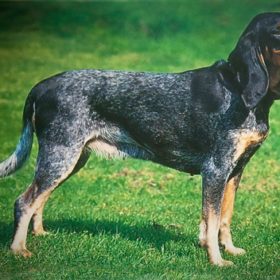 Small Lucerne Hound
Small Lucerne Hound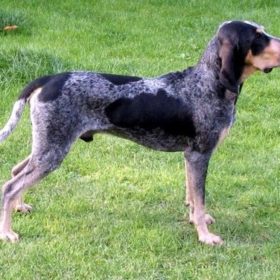 Grand Bleu de Gascogne
Grand Bleu de Gascogne Havanese
Havanese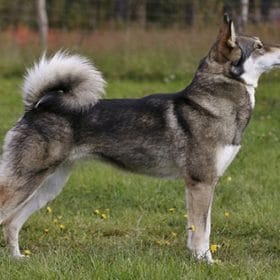 East Siberian Laika
East Siberian Laika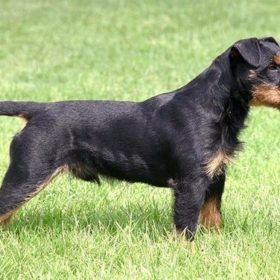 Jagdterrier
Jagdterrier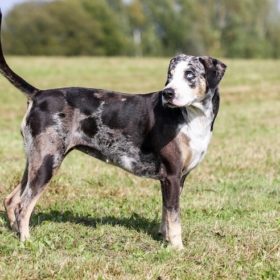 American Leopard Hound
American Leopard Hound